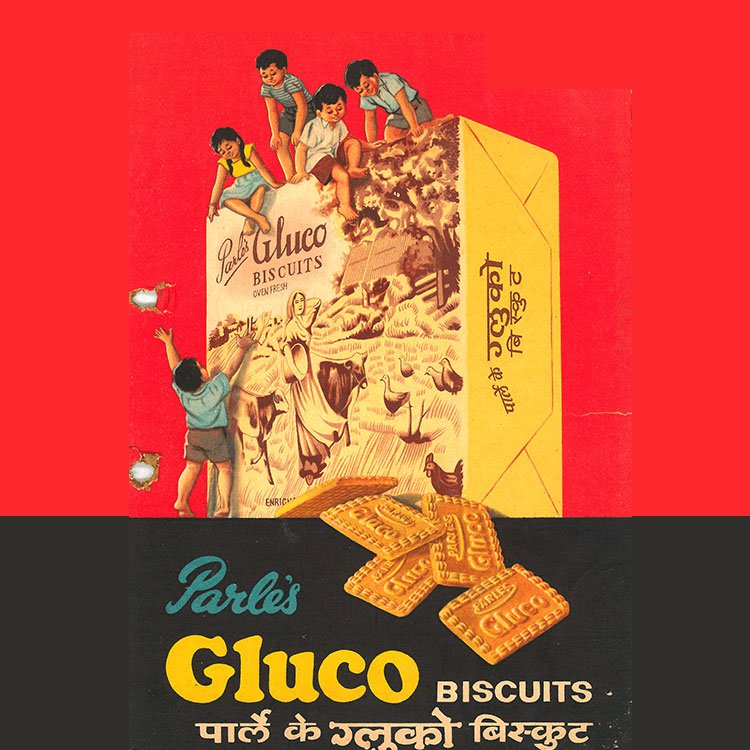Everything in this world gets old with time except for one thing – our love for Parle-G biscuits.
For millions of Indians, it’s not just a biscuit but an emotion, a comfort food.
#ParleG is not only a biscuit it’s an emotion😍😍😄 pic.twitter.com/Liai48wsfJ
— Karuna Borase (@BoraseKaruna) June 9, 2020
Apparently, the story behind its making is also an interesting one. Recently, a Twitter user shared the story of Parle-G and it has received a lot of love from Indians. Here’s how the story goes.
The founder of Parle owned a tailoring shop in Mumbai, when he was 18.
3/ Mohanlal traveled to Germany to learn the techniques involved in making confectionary.
— Palak Zatakia (@palakzat) August 8, 2020
In 1929, Mohanlal Dayal bought and refurbished a decrepit, old factory to manufacture confectionery and named it ‘House of Parle’ after the suburb it was located in – Vile Parle.
6/ They initially started by producing sweets, peppermints, and toffees made of glucose, pure sugar, and milk. House of Parle employed 12 family members initially – all of them taking care of the engineering, manufacturing, and packaging the products.
— Palak Zatakia (@palakzat) August 8, 2020
Its first product was an orange candy that was soon followed by other confectioneries and toffees. However, it was only 10 years later that it began its biscuit making operations.

The company baked its first biscuit – Parle Gluco – in 1939.

At that time, biscuits were mostly consumed by Britishers and upper class Indians and Parle’s affordable and tasty biscuits soon became a hit among masses.
12/ During World War II, it became a go-to biscuit for the British-Indian army.
— Palak Zatakia (@palakzat) August 8, 2020
13/ In the early 1940s, Parle also produced India’s first salted cracker – Monaco. pic.twitter.com/Aux158GAWa
— Palak Zatakia (@palakzat) August 8, 2020
However, in 1947, after the partition, and the ousting of the British, India faced a severe shortage of wheat and the production of Parle Gluco biscuits had to stop for a while. The company then started making barley biscuits.

Later, other competitor brands like Britannia entered the business of glucose biscuits and Parle Gluco started losing its sales. This was when the company thought of coming up with new packaging.
17/ To keep up their sales and stand out in the market, Parle Gluco changed its name to ‘Parle-G’ in the 80s, introduced it in a new package with white and yellow stripes, and the illustration of ‘Parle-G Girl’ – or the package design that we know of, today.
— Palak Zatakia (@palakzat) August 8, 2020
18/ There are multiple stories about who the Parle-G girl is. It was recently clarified that the featured Parle-G girl was just an illustration done by Everest Creative’s artist Maganlal Daiya in the 60s. A result of his imagination.
— Palak Zatakia (@palakzat) August 8, 2020
The biscuit didn’t just get all-new packaging; but also a new name: Parle-G.
21/ Originally, the “G” in Parle-G stood for “Glucose” which was later changed to “Genius” in the early 2000s.
— Palak Zatakia (@palakzat) August 8, 2020
Later, the brand was also endorsed by the Indian superhero – Shaktimaan and there was no looking back.
From ‘G Maane Genius’ and ‘Hindustan ki Taakat’ to ‘Roko Mat, Toko Mat’, Parle- G’s fun yet relatable ads made it everyone’s go-to biscuit.

It became the perfect accompaniment to our evening chai and also came to our rescue when we went broke.

And, for the first time in almost 82 years, Parle-G recorded the highest ever sales in the months of March, April and May, during the recent coronavirus lockdown.
You can read the complete thread here.
I’m going to get a glass of water because Parle-G and water is the best combination ever.

















